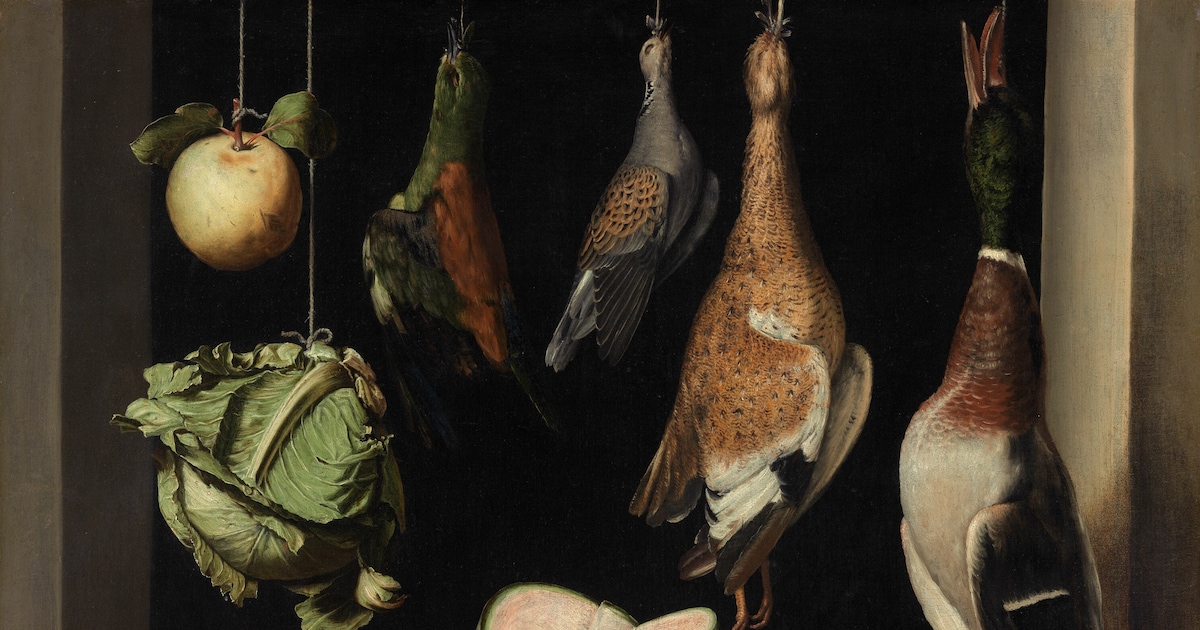Coming into the Art Institute of Chicago off that great city’s streets (where, as Saul Bellow wrote, everything is “louder, rawer, cruder, noisier, hotter, bigger”) and arriving, more frazzled than fresh, at this Spanish still life, you might feel mesmerized by its quietude.
The painting’s rich detail and foursquare frontality all but command attention. Let your antennae attune, and you might even sense something uncanny about it — a trembling interplay, perhaps, between life and death, order and disorder.
The painting, by Juan Sánchez Cotán (1560-1627), is the earliest European still life in the Art Institute of Chicago’s collection, but it looks anything but rudimentary.
Four birds, a quince and a cabbage are suspended midair. Their weight pulls taut the twine, its fibers fraying, by which they hang. Balanced precariously on the stone ledge below are a chayote (or choko), a cantaloupe and a cucumber. The cantaloupe has been hacked into, exposing seeds and pale flesh. A scythe-shaped slice sits beside it. The fruit’s flesh separates from the skin at its proximate tip.
Light comes in from the left. It pits the carefully separated objects against the dark background void, irradiating the edges of feathers and leaves, the corrugations of the cabbage, and the tiny serrations lining the open beak of the duck.
Shadows are always logical. They’re determined by the light’s direction, the light source’s distance from the intervening object and that object’s shape. But the shadows cast here are confoundingly complex, the more so because the hanging objects are not aligned in the same plane. Some push forward, in front of the ledge, others recede. The resulting interplay between light and dark lulls and hypnotizes the mind, like the irregular rhythm of waves collapsing softly on a beach.
Cotán’s painting is a wonder. Stand in front of it for three minutes, and your whole soul will have taken leave of the hubbub outside. You’ll be under the spell of a Spaniard who lived and painted more than 400 years ago, before any European had settled ideas about what a “still life” was. Nothing in the painting has moved in those intervening years. Nothing has made a single sound. It is all just there, inside the frame, precisely where it has always been.

